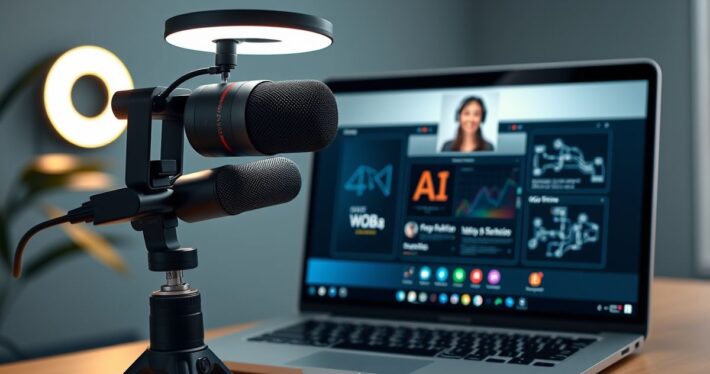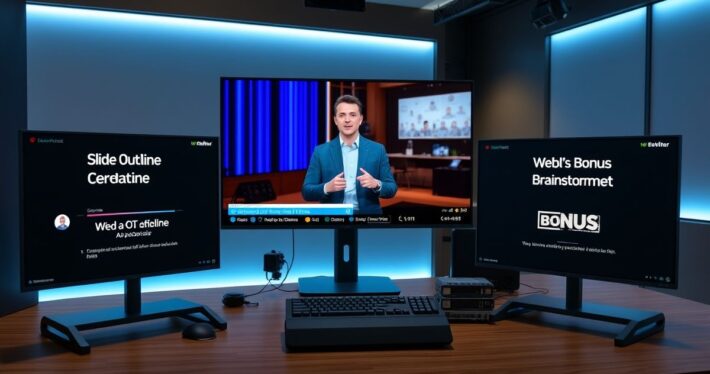How to use AI for mobile-friendly tech setups.

In today’s mobile-first world, creating a seamless, user-friendly tech setup isn’t just a nice-to-have—it’s a necessity. But let’s be honest: optimizing for mobile can feel overwhelming. That’s where AI comes in. By harnessing the power of artificial intelligence, you can simplify mobile-friendly tech setups, improve user experiences, and even boost engagement. Whether you’re a small business owner, a developer, or a tech enthusiast, this guide will walk you through how to use AI for mobile optimization effectively.
Why Mobile-Friendly Tech Setups Matter
First things first: why should you care about mobile-friendly setups? Well, consider this: over 60% of global web traffic comes from mobile devices. Users expect fast, intuitive, and responsive experiences—no matter the screen size. If your tech setup isn’t optimized for mobile, you’re losing potential customers, lowering engagement, and hurting your brand reputation.
AI can help bridge the gap. From automating responsive design to personalizing user experiences, AI tools are transforming how we approach mobile optimization. So, how exactly can you use AI to create a mobile-friendly tech setup? Let’s dive in.
1. AI-Powered Responsive Design
Creating a website or app that looks great on both desktops and mobile devices can be a headache. Traditional methods often require hours of manual tweaking. Enter AI-powered responsive design tools.
These tools analyze your content, layout, and user behavior to automatically adjust designs for different screen sizes. For example, platforms like Wix ADI and The Grid use AI to generate mobile-friendly layouts in minutes.
Pro Tip: Pair AI design tools with heatmap analytics to see how users interact with your mobile interface. This data can help you further refine your design for maximum usability.
2. AI-Driven Performance Optimization
Slow-loading mobile sites are a major turnoff. In fact, 53% of users abandon sites that take longer than three seconds to load. AI can help you optimize performance by analyzing your site’s speed, identifying bottlenecks, and suggesting fixes.
Tools like Google’s Lighthouse and Cloudflare’s AI-powered optimization solutions use machine learning to improve page load times and enhance mobile performance.
Real-World Example: A retail brand used AI to identify and compress large images that were slowing down their mobile site. The result? A 40% reduction in load time and a 15% increase in mobile conversions.
3. Personalized Mobile Experiences with AI
Personalization is key to engaging mobile users. AI can analyze user data—such as browsing history, location, and preferences—to deliver tailored content and recommendations.
For instance, Netflix and Spotify use AI algorithms to curate personalized playlists and show recommendations based on user behavior. Similarly, e-commerce platforms like Amazon leverage AI to suggest products that match individual preferences.
Actionable Advice: Start small by using AI to personalize mobile push notifications or email campaigns. Over time, you can scale up to more advanced personalization strategies.
4. AI for Voice Search Optimization
Voice search is booming, with over 50% of searches expected to be voice-based by 2024. To stay ahead, you’ll need to optimize your mobile setup for voice search.
AI-powered tools like SEMrush and Ahrefs can help you identify voice search keywords and optimize your content accordingly. Additionally, integrating voice assistants like Google Assistant or Siri into your app can enhance the mobile experience.
Fun Fact: Voice search queries are often longer and more conversational than text searches. Use AI to analyze natural language patterns and optimize for these nuances.
5. AI Chatbots for Mobile Support
Mobile users crave instant support, and AI chatbots can deliver just that. Chatbots like Drift and Intercom use natural language processing (NLP) to answer user queries, guide them through your site, and even assist with purchases.
Pro Tip: Train your chatbot to handle common mobile-specific issues, such as troubleshooting app errors or assisting with mobile payments.
6. AI for Mobile Security
Security is a top concern for mobile users. AI can help detect and prevent threats by analyzing user behavior and identifying anomalies.
For example, Darktrace uses AI to monitor network activity in real-time, flagging potential security breaches before they escalate. Similarly, AI-powered authentication tools like Face ID and Touch ID enhance mobile security by verifying user identities.
Quick Tip: Regularly update your AI security tools to stay ahead of emerging threats.
Challenges and How to Overcome Them
While AI offers incredible potential, it’s not without its challenges. Data privacy concerns, integration complexities, and the need for ongoing maintenance can pose hurdles.
Solution: Start with low-risk AI implementations, such as chatbots or performance optimization tools. As you gain confidence, you can explore more advanced applications. Additionally, ensure compliance with data privacy regulations like GDPR to build user trust.
Final Thoughts
Using AI for mobile-friendly tech setups isn’t just a trend—it’s the future. By leveraging AI-powered tools and strategies, you can create seamless, engaging, and personalized mobile experiences that keep users coming back.
So, what’s your next step? Start small, experiment with AI tools, and continuously refine your approach. Remember, the goal isn’t just to optimize for mobile—it’s to create experiences that users love.
Feature Image Description
An illustration showing a smartphone with various AI-powered elements, such as a chatbot, personalized content, and responsive design, highlighting the seamless integration of AI in mobile-friendly tech setups.



